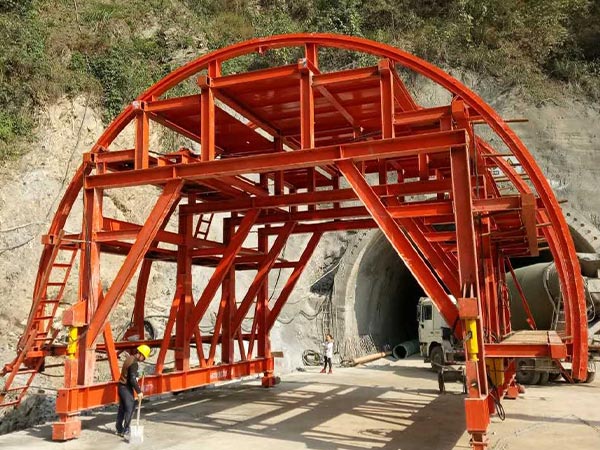Introduction to the working principle of tunnel lining trolley

The tunnel lining trolley is the equipment that must be used in the secondary lining of the tunnel construction process, and is used for the lining construction of the inner wall of the tunnel. It is an indispensable non-standard product for secondary lining during tunnel construction. It mainly consists of simple lining trolley, hydraulic automatic walking lining trolley and grid lining trolley. The hydraulic lining trolley can be further divided into a side arch type, a round needle beam type, a bottom mold needle beam type, a round through type and the like. Lifting slipforms, jacking slipforms and overturning are also commonly used in hydraulic tunnels and bridge construction.
The specific models of the tunnel two-lined trolleys are divided into various types. Under normal circumstances, the tunnels can be divided into two types: the ordinary two-line trolleys, the ordinary highway two-line trolleys, and the expressway double-line. Trolley, expressway three-line trolley, ordinary railway single-line trolley, high-speed railway trolley, water conservancy and hydropower diversion tunnel trolley, mine roadway trolley, subway lining trolley, and inner and outer mold lining trolley.
According to the specific lining length of the tunnel two-liner, it can be divided into: 6 meters, 9 meters, 12 meters, 15 meters, etc., the length of the second lining, the length of the tunnel for the actual construction is the length of the tunnel. standard.
Available in hydraulic and mechanical versions. After analysis and comparison, the hydraulic type frame has low rigidity requirements, flexible structure and light weight, low processing requirements and high elevation requirements for laying tracks during construction. It is easy to use, but has high self-locking requirements for hydraulic cylinders. The hydraulic cylinders in the lining are not. Allow retraction. The mechanical type is the opposite. Since several motors need to drive several screw drives, the coaxiality of each drive shaft is high, and the frame must have a large rigidity, the structure size is accurate, due to the heavy structure and high processing requirements. Moreover, because the lead screw is synchronous (not like hydraulic transmission, each hydraulic cylinder can be synchronized or single-acting), when the track elevation error (each point is not at the same level) is large, it will directly affect the position of the template, thus affecting the quality of the lining. .
After the analysis and comparison, the hydraulic transmission scheme is adopted, and the hydraulic cylinder adopts hydraulic lock and balance valve to make the hydraulic cylinder self-locking; at the same time, the screw mechanism is used for mechanical locking, and the support of the template is strengthened to ensure that the template does not return when lining Shrink, no deformation. Practice has proved that the lining trolley is hydraulically reasonable and is the development direction.
The tunnel lining trolley is the construction equipment for pouring the secondary lining concrete of the tunnel. It cooperates with other auxiliary machinery, which can reduce the labor force, improve the mechanization rate of the second lining construction of the tunnel, improve the construction progress, and has low input cost, firm structure, convenient operation and tunnel. The molding surface is good, and so on, it is widely used in highway, railway, water conservancy and hydropower, municipal, anti-military and other engineering construction.
According to the tunnel project, the lining trolley is divided into a side arch type, a straight wall variable section side arch type, a mutant face type, a round needle beam type, a round through line type and the like. According to the actual needs of users, the hydraulic self-propelled, hydraulic drag type, mechanical steel formwork, simple combination formwork and other types can be selected by motor. The length of the trolley can be selected from 6 meters, 7.5 meters and 9 meters depending on the length of the tunnel and the construction period. 10.5 meters, 12 meters, etc.
To sum up: the specific model of the tunnel two-lined trolley is based on the bending dimension and section size of the actual construction structure.


